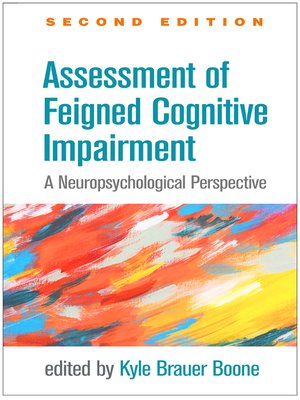Assessment of Feigned Cognitive Impairment
ebook ∣ A Neuropsychological Perspective · Evidence-Based Practice in Neuropsychology Series
By Kyle Brauer Boone

Sign up to save your library
With an OverDrive account, you can save your favorite libraries for at-a-glance information about availability. Find out more about OverDrive accounts.
Find this title in Libby, the library reading app by OverDrive.



Search for a digital library with this title
Title found at these libraries:
| Library Name | Distance |
|---|---|
| Loading... |
The go-to resource for clinical and forensic practice has now been significantly revised with 85% new material, reflecting the tremendous growth of the field. Leading authorities synthesize the state of the science on symptom feigning in cognitive testing and present evidence-based recommendations for distinguishing between credible and noncredible performance. A wide range of performance validity tests (PVTs) and symptom validity tests (SVTs) are critically reviewed and guidelines provided for applying them across differing cognitive domains and medical, neurological, and psychiatric conditions. The book also covers validity testing in forensic settings and with particular populations, such as ethnic and linguistic minority group members.
New to This Edition
*Numerous new authors, a greatly expanded range of topics, and the latest data throughout.
*"Clinical primer" chapter on how to select and interpret appropriate PVTs.
*Chapters on methods for validity testing in visual–spatial, processing speed, and language domains and with cognitive screening instruments and personality inventories.
*Chapter on methods for interpreting multiple PVTs in combination.
*Chapters on additional populations (military personnel, children and adolescents) and clinical problems (dementia, somatoform/conversion disorder).
*Chapters on research methods for validating PVTs, base rates of feigned mild traumatic brain injury, and more.
New to This Edition
*Numerous new authors, a greatly expanded range of topics, and the latest data throughout.
*"Clinical primer" chapter on how to select and interpret appropriate PVTs.
*Chapters on methods for validity testing in visual–spatial, processing speed, and language domains and with cognitive screening instruments and personality inventories.
*Chapter on methods for interpreting multiple PVTs in combination.
*Chapters on additional populations (military personnel, children and adolescents) and clinical problems (dementia, somatoform/conversion disorder).
*Chapters on research methods for validating PVTs, base rates of feigned mild traumatic brain injury, and more.







